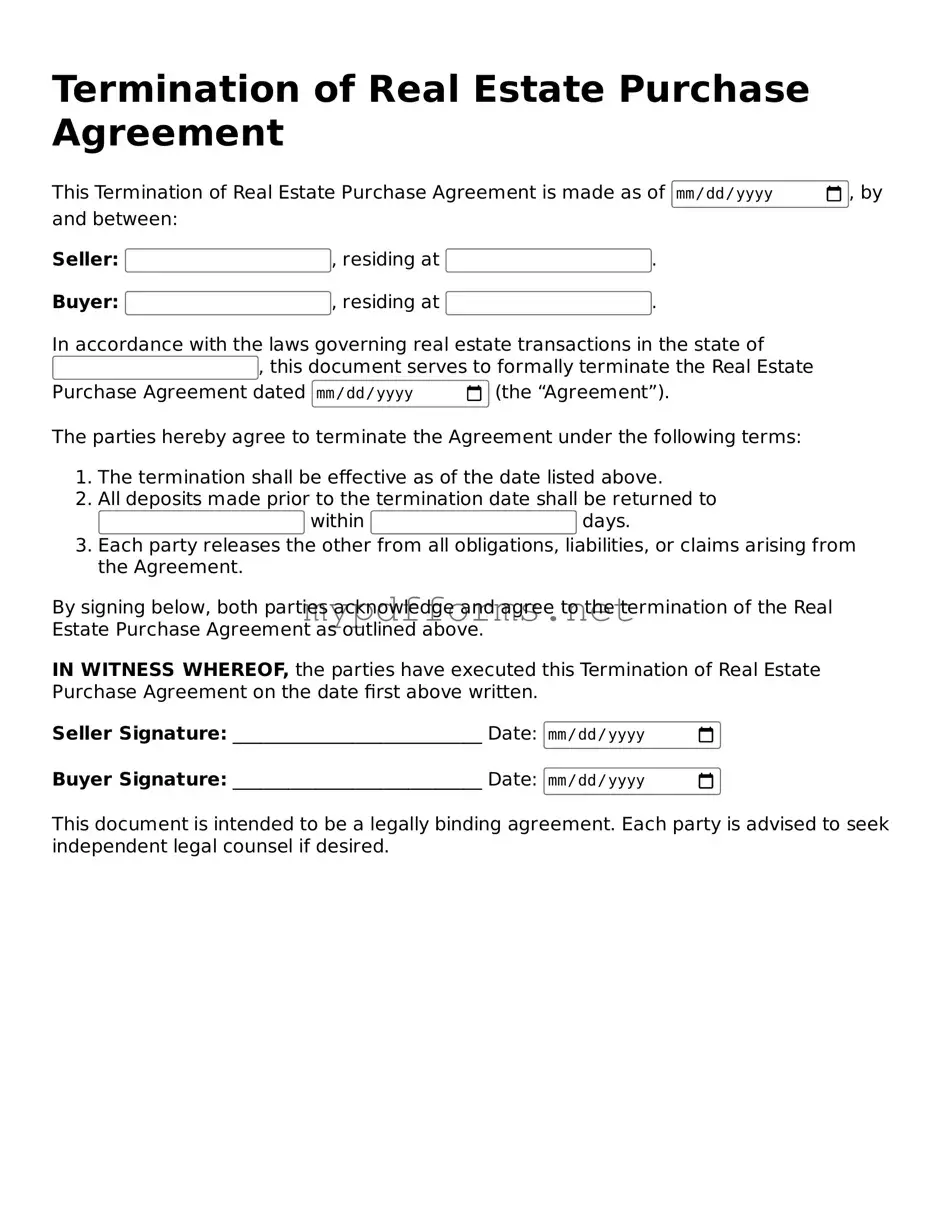The Termination of Real Estate Purchase Agreement form shares similarities with the Mutual Release Agreement. Both documents serve to formally end a contractual relationship between parties. In a Mutual Release Agreement, both parties agree to relinquish any claims against each other, effectively nullifying any obligations under the original contract. This is particularly useful in situations where both parties wish to avoid potential disputes and want to ensure that neither can pursue legal action related to the agreement in question.
Another document that bears resemblance is the Cancellation of Contract form. Like the Termination of Real Estate Purchase Agreement, this form is used to officially cancel a contract before it is fulfilled. The Cancellation of Contract form outlines the reasons for cancellation and may require signatures from all parties involved. This ensures that there is a mutual understanding and agreement that the contract is no longer valid, preventing any future misunderstandings.
The Release of Liability form is also comparable. This document allows one party to release the other from any future claims or liabilities that may arise from the agreement. In the context of real estate, this means that if the purchase agreement is terminated, the buyer may release the seller from any obligations related to the transaction. This helps protect both parties from potential legal issues that could stem from the termination.
In navigating the complexities of real estate transactions, it's critical to utilize comprehensive forms that safeguard both buyers and sellers. For example, the Colorado PDF Forms provide essential legal frameworks that govern the purchase agreement process, ensuring that all parties understand their rights and responsibilities under Colorado law. By leveraging these resources, participants can make informed decisions and minimize potential disputes throughout the transaction journey.
Additionally, the Notice of Termination can be considered similar. This document serves as a formal notification that a party intends to terminate an agreement. While it may not finalize the termination like the Termination of Real Estate Purchase Agreement, it sets the stage for the termination process. The Notice of Termination typically includes the reasons for termination and any relevant timelines, ensuring that all parties are aware of the impending changes.
Lastly, the Withdrawal of Offer form is relevant in this context. While it is typically used before a purchase agreement is finalized, it serves a similar purpose in terms of ending negotiations. If a buyer decides to withdraw their offer on a property, this form formally communicates that decision to the seller. This can prevent further negotiations and clarify the buyer's intent, similar to how the Termination of Real Estate Purchase Agreement clarifies the end of an existing contract.
